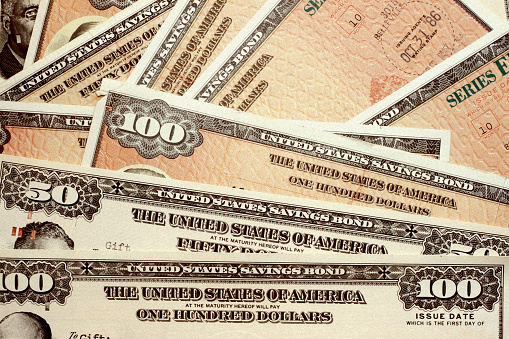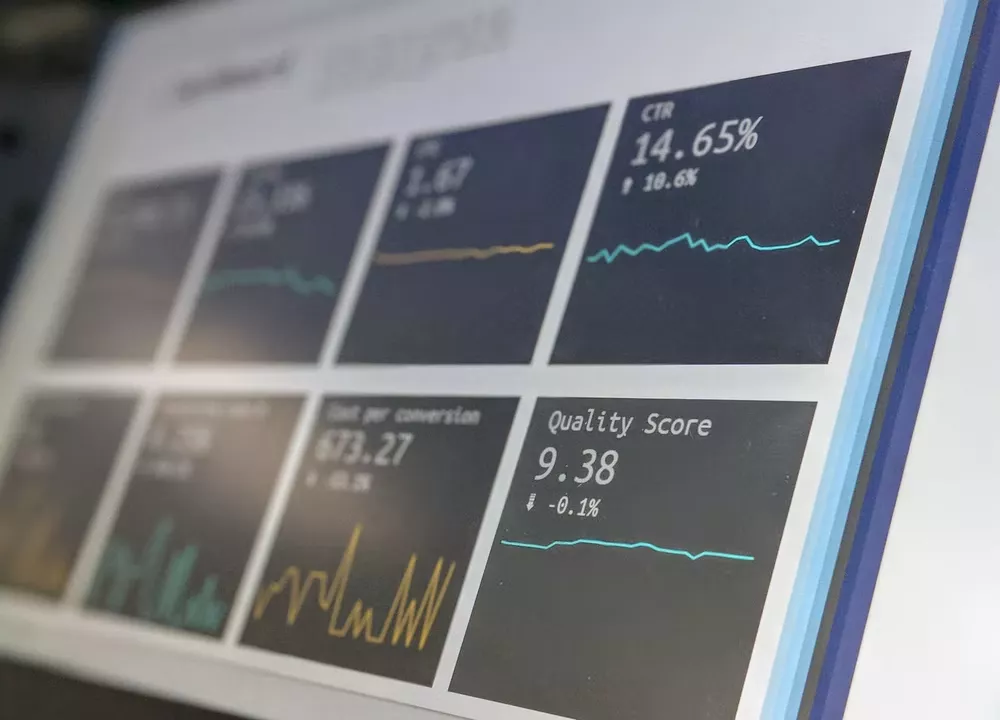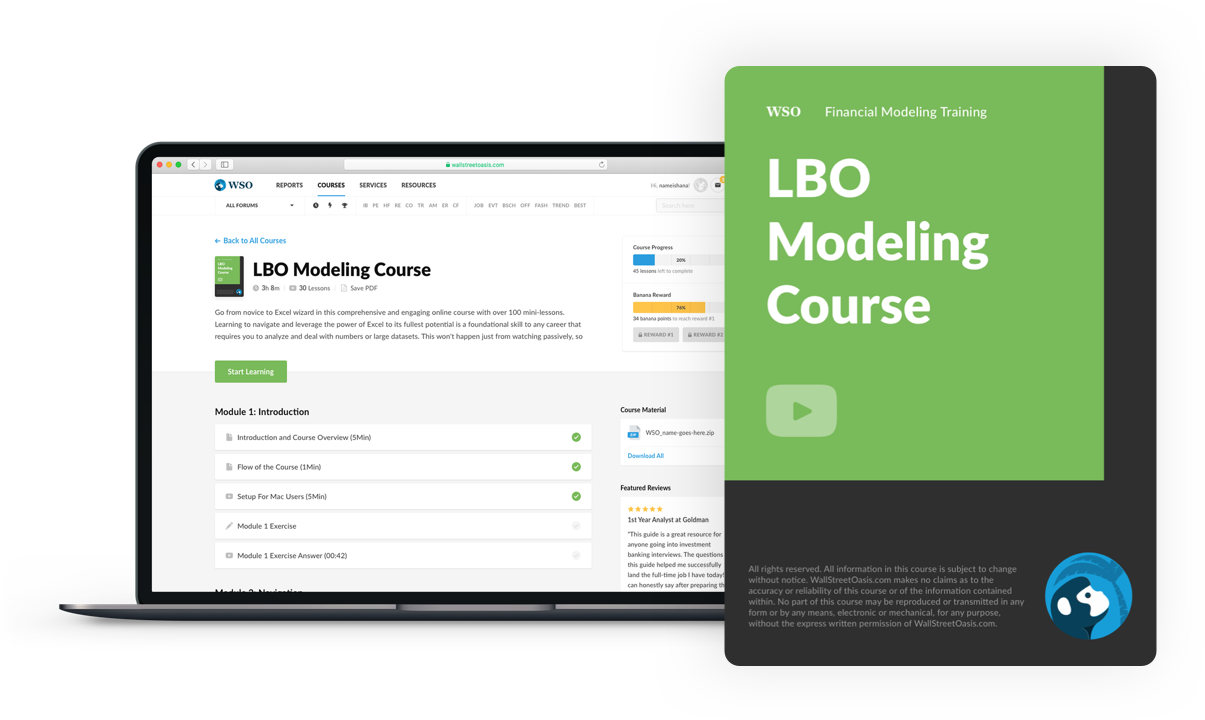
LBO Modeling
An acquisition of a company financed using debt for a high percentage of the transaction.
A leveraged buyout is an acquisition of a company financed using debt for a high percentage of the transaction.
What is LBO Model (Leveraged Buyout)?
The leveraged buyout model is used for financial modeling during the acquisition phase of a company. A company that tries to acquire another company uses borrowed finances to proceed with the acquisition.
For example, Elon Musk took investment advice and borrowed funds from banks like Morgan Stanley and Bank of America for his initial plan of acquiring Twitter.
The financing includes the use of both debt and equity. We can understand this using the example of buying a house. Generally, people pay some cash for buying a house or real estate, and for the remaining value, they use loans.
In this case, the house acts as collateral for the loan. In a Leveraged Buyout, collateral is the target company's tangible assets.
The phases of a Leveraged Buyout process:
- Creating a Special Purpose Vehicle
- Acquiring the Target's Shares
- Merging the Special Purpose Vehicle and the Target
Steps to Leveraged Buyout Modeling:
- Transaction Assumptions
- Financial Statements
- Transaction Balance Sheet
- Debt Schedules
- Credit metrics
- Calculating enterprise value, Discounted Cash Flow, and Internal Rate of Return
- Sensitivity Analysis, Charts, and Graphs
When is a Leveraged Buyout feasible option?
A leveraged buyout is a feasible option when there is a possibility of better exit options in the future. This happens when the company has mature, steady revenue generation, a strong management team, etc.
Let's go through a few details of the Morgan Stanley and Elon Musk Leveraged Buyout transactions in the failed Twitter acquisition. In April of 2022, Elon Musk, CEO of Tesla, announced a takeover bid of 44 billion dollars for acquiring Twitter at 100% ownership.

Twitter's 44 billion dollar offer by Elon Musk is funded using various sources. Elon Musk took out a loan of 13 billion dollars to finance the deal.
For the remaining, Elon musk took a margin loan of $12.5 billion against Tesla stocks. Banks are providing a $6.5 billion senior secured term loan facility and two bridge loans. An old secured loan of up to $3 billion and an unsecured bridge loan of $3 billion.
The banks also provided $500 million as a senior secured revolving credit facility.
For the 12.5 billion dollar loan, Morgan Stanley took collateral of 62.5 billion dollars worth of Tesla shares, this account for around 61 million shares. Elon Musk has a total of 173 million shares + 59 million options.
Hence, even if he defaults on the loan, he would not lose his major voting rights on Tesla. Elon has filled out Schedule 13D to give details of his ownership, voting power, and dispositive power. We will look into Schedule 13D in detail later.
Let us now look at various terms and steps in detail of how a Leveraged Buyout takes place, how it is modeled, etc.
Adjustments to the Pro Forma Balance Sheet in a Leveraged Buyout
Balance sheet adjustments involve adjustments in the target company and purchase price adjustments.

Let us understand these two terms:
1. Target Company adjustments
These are the adjustments to prepare the target company's balance sheet for the transaction.
2. Purchase Price Adjustments
These are the adjustments made to record the acquisition of the target company.
The following adjustments are made under the tab of target company adjustments:
1. Eliminate Cash for a Cash-Free Transaction
Since most transactions are cash-free, it is safe to eliminate cash on the balance sheet and reduce the retained earnings by the same amount.
2. Eliminate Old Goodwill
The purchase price is based on the net assets of the company. Goodwill is not an identifiable asset, hence is eliminated. To eliminate goodwill from the balance sheet, you must reduce the retained earnings by the same amount.
3. Move the current portion of long-term assets and liabilities to the long-term balance
Long-term assets and liabilities will have a principal amortization and depreciation that will appear under the current portion. These values can be shifted to the long term in the balance sheet. Part of these liabilities/debts have to be paid within the current year.

After adjusting the current portion, we move on to Adjusting to a Fair Value.
4. Adjusting Assets and Liabilities to fair value
For adjusting assets and liabilities, let us understand how accounts receivable and inventory are changed.
To be noted, the adjustments are made to all the assets and liabilities.
Accounts receivable:
Adjustment is required in case there is a possibility of default on some payments. For debit, retained earnings and credit accounts receivable are adjusted.
Inventory:
Inventory adjustments are generally required when the inventory evaluation or management of the inventory is not accurate or inefficient. The adjustments made in the debit column are retained earnings and inventory under the credit column.
Under inventory corrections, the tax also should be considered. There might be errors in tax returns.
Moving on to purchase price adjustments. These are to be done only after target company adjustments. The initial step is to identify capital sources used in the acquisition. We have a sources and uses of funds table. It calculates the total amount required for an M&A transaction.

Let us understand this table's breakdown and how it is used.
The sources and uses section identifies the total cost of acquiring the target. The uses section calculates the total amount of capital required to make the acquisition, and the sources section gives details of how the transaction is going to be funded.
Common sources listed in the source sections:
- Term Loan
- Seller Note
- Preferred Equity
- Common Equity
Common Uses listed in Uses Section:
- Seller Proceeds
- Old Company Debt
- Cash at Close
- Financing Fees
- Transaction expenses
From this, we can calculate goodwill:
Goodwill = Seller Proceeds - Common Equity
The following adjustments are made to the balance sheet
- Eliminate Old Company Equity Accounts
- Eliminate Old Company Debt Balances
- Add New Company Equity Accounts
- Add New Company Debt Balances
- Expense Transaction Expenses
- Adjust for Financing Fees* (see note at the bottom of post)
- Add Goodwill Calculation
- Add Cash at Close
Understanding the Leveraged Buyout Debt Schedule
Since Leveraged Buyout involves loans for a high percentage of acquisition payment, it is necessary to understand how debt can be repaid in the future. A debt schedule calculates the interest and principal payments each year after acquisition.

Let us first look at the various terminologies and types of debt.
LIBOR rate stands for London Interbank Offer Rate. It is a global reference rate for short-term loans, at which each bank loans money to other banks. The interest rate is often given as a LIBOR rate plus an interest rate.
Since many bonds of different types like senior secured bonds, subordinated bonds, and income bonds, debt scheduling becomes a hectic process. For example, we need to pay the principal on senior secured bonds but not on subordinated bonds.
Along with predicting different debt repayment, the analyst must also indicate the LIBOR rate over the next 5 or 10 years. After calculating LIBOR, one can evaluate the principal payments over the next five years.
Senior secured bond interest will vary with LIBOR; however, the interest rate might be fixed for subordinate bonds. Some bonds, such as income bonds, have variable interest rates based on the revenue generated.
The rows included under senior secured bonds are beginning senior bonds, mandatory repayment, optional repayment, and ending senior secured bonds. Optional repayment is used when the company has extra cash and wants to repay loans early.
Senior bonds have a fixed amount of principal payment distributed equally over a given period of time.

Subordinated Bonds:
Subordinated bonds don't have the possibility of optional repayments (early payments). Instead, subordinated bonds only have beginning subordinated bonds, mandatory repayment, and ending subordinated bonds predicted over the period of the next 5 to 10 years.
Interest Rate expense:
After calculating principal payments, we calculate the interest rate expenses. The beginning amount of the debt is used for calculating the interest expense on each financial instrument.
Here's the breakdown of interest payments based on the type of debt:
Total interest payment = Interest on Senior Debt + Interest on Subordinated Debt
As the beginning principal decreases, the interest expense decreases over time.
Credit Metrics in a Leveraged Buyout
After creating the complete financial model, we use different financial ratios to understand the company's financial health. Similarly, in the leveraged buyout model, several credit metrics are used to evaluate the deal. Here are some of the commonly used credit metrics:

Net Debt Metrics:
1. Net Debt/EBITDA
Net Debt/EBITDA can be found in the company's income statement.
2. Net Debt/(EBITDA-CapEx)
This ratio is a modified version of Net Debt/EBITDA, as CapEx can be removed if necessary to pay off debt.
Interest Expense Metrics:
1. EBITDA/Net Interest Expense
EBITDA can be found from the Income statement, and Net interest expense can be found from the Debt Schedule. The higher ratio is preferred as it leads to less fraction of EBITDA being used for Net interest expense payment.
2. EBITDA-CapEx)/Net Interest Expense
This ratio has a smaller value; however, the trend is similar to EBITDA / Net Interest Expense.
The debt service coverage ratio measures the ability of a company to pay off its debt obligations from its cash flow. This can be used to analyze companies as well as individuals.
The formula is as follows:
Debt Service Coverage Ratio = Net Operating Income/Total Debt Service
Net Operating Income = Revenue - COE
COE = Certain operating expenses
Total Debt Service = Current debt obligations
Sometimes, non-operating income is included in EBIT. Generally, high ratios are preferred; however, it depends on the macroeconomic conditions. In good conditions, even during a lower ratio, potential investors invest their money.
Let us understand Discounted Cash Flow, Internal Rate of return, and enterprise value.
1. Discounted Cash Flow:
This model is used to estimate the value of a company based on its future cash flows. Cash flows are predicted for a period of 5 years or 10 years. Then the present value of these cash flows is calculated using risk-free return.
Based on DCF, an investment decision can be made. For example, if DCF is greater than purchasing cost, then it is a positive (preferred) investment. Similarly, it can also be used to evaluate a Leveraged Buyout transaction.
We will get an idea of the transaction cost involved in an M&A transaction using Leveraged Buyout model; based on it, and we can compare the total expected cash flow from DCF.

2. Internal Rate of return:
As the name suggests, the internal rate of return indicates the effective interest rate earned on an investment. Many a time, calculating the Internal Rate of the return value can be cumbersome because of its compounded nature and the number of inputs required.
In order to calculate the Internal Rate of return easily, we use EBITDA, Debt/EBITDA, and EBITDA multiple values.
One can calculate purchase price using EBITDA and EBITDA multiple. For exit enterprise price, as we saw above, we can predict the growth of EBITDA and calculate exit multiple using debt amortization.
3. Enterprise value:
In order to calculate exit Enterprise value, firms use two methods, the exit multiple methods and the perpetual growth method.
The multiple exit methods predict a company's EBITDA and calculate multiple factors called exit multiple such that:
Exit enterprise value = EBITDA * Exit multiple
The perpetual growth method is similar to the Discounted Cash flow model. It calculates the cash flow generated by a company, and perpetual growth(constant growth rate) is assumed.
T0 = D0(1+g)/(k-g)
Where
g is the constant growth rate
k is the discount rate
D0 represents cash flow at a point t in a time period
The perpetual growth method produces a higher terminal value.
Sensitivity Analysis in Leveraged Buyouts
Sensitivity analysis is the last step of Leveraged Buyout modeling. It calculates a series (tries various assumptions) of internal rates of returns for a given purchase price and leverage assumption.

This part is important for the analysis of IRR and LBO valuation. IRR is the dependent variable in this case. It calculates the changes in the variation in the number of years to exit and the expected exit multiple (how much the company will return on selling after a specified number of years).
With this variation, we calculate how the Internal Rate of return is changing. Usually, the threshold value for the Internal Rate of return is 20% to 25%.
The second way of analysis is to find the relation between the premium to be paid and the EBITDA multiple and see how high an Internal Rate of return can be achieved.
Sources of funds for Leveraged Buyout transaction:
- Revolving credit facility
- Subordinated or High-Yield Notes
- Bank Debt
- Mezzanine Debt
- Seller Notes
- Common Equity
Sources of Revenue:
- Carried Interest
- Management Fees
- Co-Investment

Everything You Need To Master LBO Modeling
To Help You Thrive in the Most Prestigious Jobs on Wall Street.


or Want to Sign up with your social account?